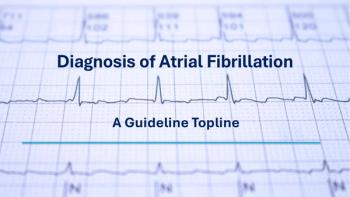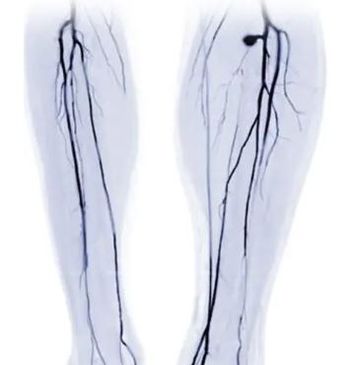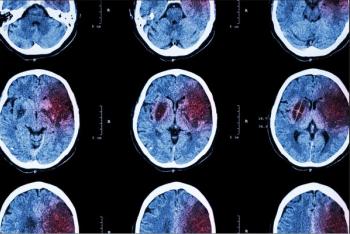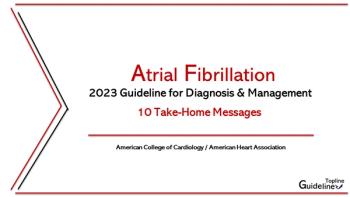
Atrial Fibrillation
Latest News

Metformin May Be Effective Treatment for Atrial Fibrillation in Adults wtih Obesity and Without Diabetes
Latest Videos

CME Content
More News

This AF guideline topline offers an at-a-glance look at the most recent ACC/AHA guidance on diagnosis of the arrhythmia.

The first low-dose rivaroxaban generic tablets to be FDA approved lead a field crowded with applications for formulations of all the higher doses.

Your daily dose of the clinical news you may have missed.

Participants with AF who used wearable devices reported higher anxiety levels and increased health care usage than nonusers, according to a new study.

Your daily dose of the clinical news you may have missed.

Patients with AF aged younger than 65 years have substantial comorbidity burden that may impact their future risk of mortality, reported researchers.

Overall, a 33% increased risk of major bleeding was seen, with risk highest during the first 30 days of concomitant use and persistent, but lower, after 6 months.

Your daily dose of the clinical news you may have missed.

Anticoagulation and antiplatelet therapy appeared equally effective in reducing risk of recurrent stroke following cryptogenic stroke in persons with evidence of atrial cardiopathy.

In apixaban-treated participants, risk of stroke or systemic embolism was reduced by 37%; the risk of disability or fatal stroke declined by 49%, but with noted bleeding risk.

The risk of severe CV events, including leading to death, was greatest in the first week following an exacerbation but remained significantly elevated 1 year later.

The 10 most important take-homes from the 2023 ACC/AHA AF guidelines are summarized in this Guideline Topline, an at-a-glance preview for primary care.

The revised guidance classifies AF into 4 stages, emphasizes prevention and aggressive rhythm control, and upgrades recommendations for catheter ablation and LAA occlusion.

The novel oral anticoagulant is one in a class of agents for prevention of AF-related stroke that shows promise to reduce bleeding risk.

The AZALEA-TIMI 71 trial was stopped early due to an "overwhelming reduction" in a composite endpoint of major bleeding events compared to rivaroxaban standard of care.

Your daily dose of clinical news you may have missed.

Atrial fibrillation prevalence is rising across socioeconomic strata globally, the new analysis finds, with effects of BMI, ETOH, and sedentary behavior shifting as key drivers.

The first 10 drugs identified for negotiations under the Inflation Reduction Act include several well advertised agents indicated to treat diabetes, heart failure, and other chronic diseases.

Oldest and most frail elderly were at more than 60% greater risk of bleeding when switched from a VKA than those who remained on the traditional agent.

Internist and obesity medicine specialist Alina Elperin, MD, details the most common cardiovascular complications that she has observed in patients with obesity.

Regardless of the pattern of physical activity, it may reduce risk across a spectrum of cardiovascular diseases, say study authors. So, just do it!

Factors positively associated with a timely first OAC Rx among the 41.3% who received one included male sex, certain comorbidities, other current medications, and obesity.

Proposed indications for the investigational factor XIa inhibitor are: stroke prevention after acute ischemic stroke or high-risk transient ischemic attack; recent acute coronary syndrome; and atrial fibrillation.

Bayer's investigational FXIa inhibitor is currently being studied in a large-scale phase 3 development program expected to enroll more than 27 000 participants.

Statin therapy initiated within 1 year of diagnosis of atrial fibrillation reduced the risk of ischemic stroke or systemic embolism by nearly 20%.


















































































































































































































































































